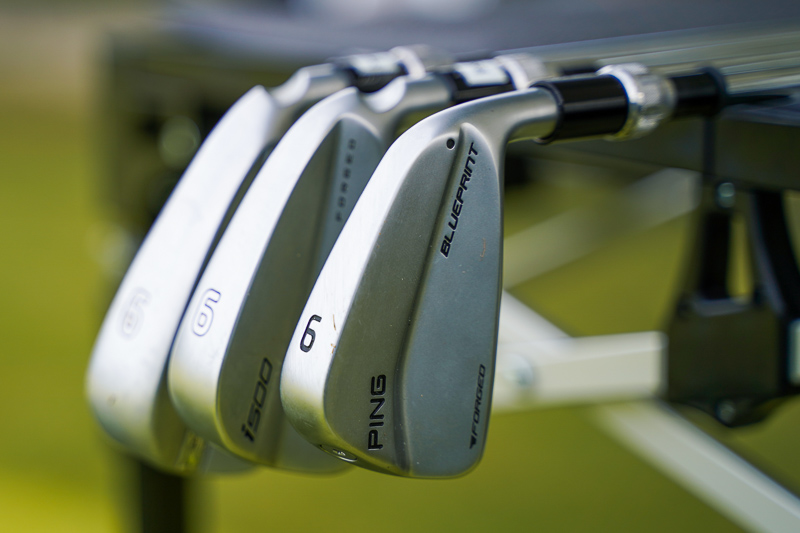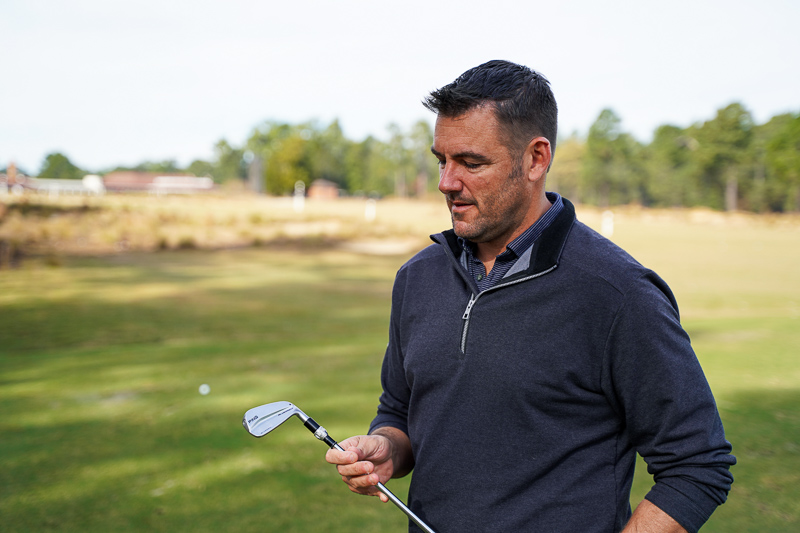While fitting someone for a driver has become fairly streamlined, fitting good players for irons and wedges is different process. It’s not all about watching them hit stock shots on the range and analyzing Track Man data. Today we’re talking with PING’s VP of Engineering, Dr Paul Wood to share what they’re doing to help players make smarter decisions about irons and wedges.
During the conception of their Blueprint iron for better players, PING looked to testing on the golf course in game-like conditions. The testing they came up with was a skills challenge where players hit different shots, like high cuts or low draws, provided feedback on what a successful shot looked like.
While numbers like ball speed, launch angle and shot curve were part of the equation, players’ opinions were taken into consideration as well. This allowed PING to see if what a player perceived a good shot to be, was actually reflected in the data.
Based on the results, PING was able to see if there was a distinct mechanical advantage to the Blueprint style of head. Their findings showed that the smaller head design of the Blueprint iron helped better players. Even though they sacrificed some forgiveness, they were able to have greater face control and hit different types of shots with increased precision.

Paul goes on to talk about PING’s wedge testing process too. Here again, PING is looking to on-course data. What they quickly realized was that most golfers hit a lot more shots from 10 to 20 yards out of the rough than they do from 50 yards in the fairway.
With this in mind, the engineers at PING enlisted the help of world-renown short game guru, Stan Utley. Utley reasoned that a wedge that worked was a wedge that performed well on a variety of different shots. This was reflected in their on-course testing with good players.
Instead of asking them to hit a number of shots to the same target, they were asked to hit one shot to a target and then move on to a different shot, rating how well the wedge performed on a scale of one to four after each shot. The thinking was that good players adapted to a club after a few shots. As a result, the most useful data came from the first shot.
Taking all this data into account, PING’s club designers were able to decipher which groove patterns and sole designs interacted best with the ball and turf in different conditions.
Clearly, Paul Wood, and his team of engineers are on the cutting edge of club design and fitting. The principles that PING was founded upon continue to play out to this day. To learn more about Paul’s work in designing and fitting wedges and irons, tune into this version of the Golf Science Lab Podcast.

By balancing your daily recovery, strain and sleep, you will train optimally and unlock the secrets to your body’s true potential.
Recovery – Get personalized daily insight into how ready your body is ready to perform by looking at bio-metrics such as heart rate variability, resting heart rate, and sleep performance.
Strain – For those looking to track more than just steps. Track how strenuous your day is from start to finish and get insight into how much you exert yourself during training.
Sleep – Optimize the way you sleep by getting target sleep times based on how strenuous your day is and your performance goals. Monitor your sleep stages and cycles, time in bed vs actual sleep, sleep efficiency (How much you were asleep while sleeping), and more.
Get email updates to full interviews; exclusive insights; our regular newsletter, the DISPATCH; and our latest education offers.
© 2023 All Rights Reserved. This site is protected by reCAPTCHA and the Google Privacy Policy and Terms of Service apply.